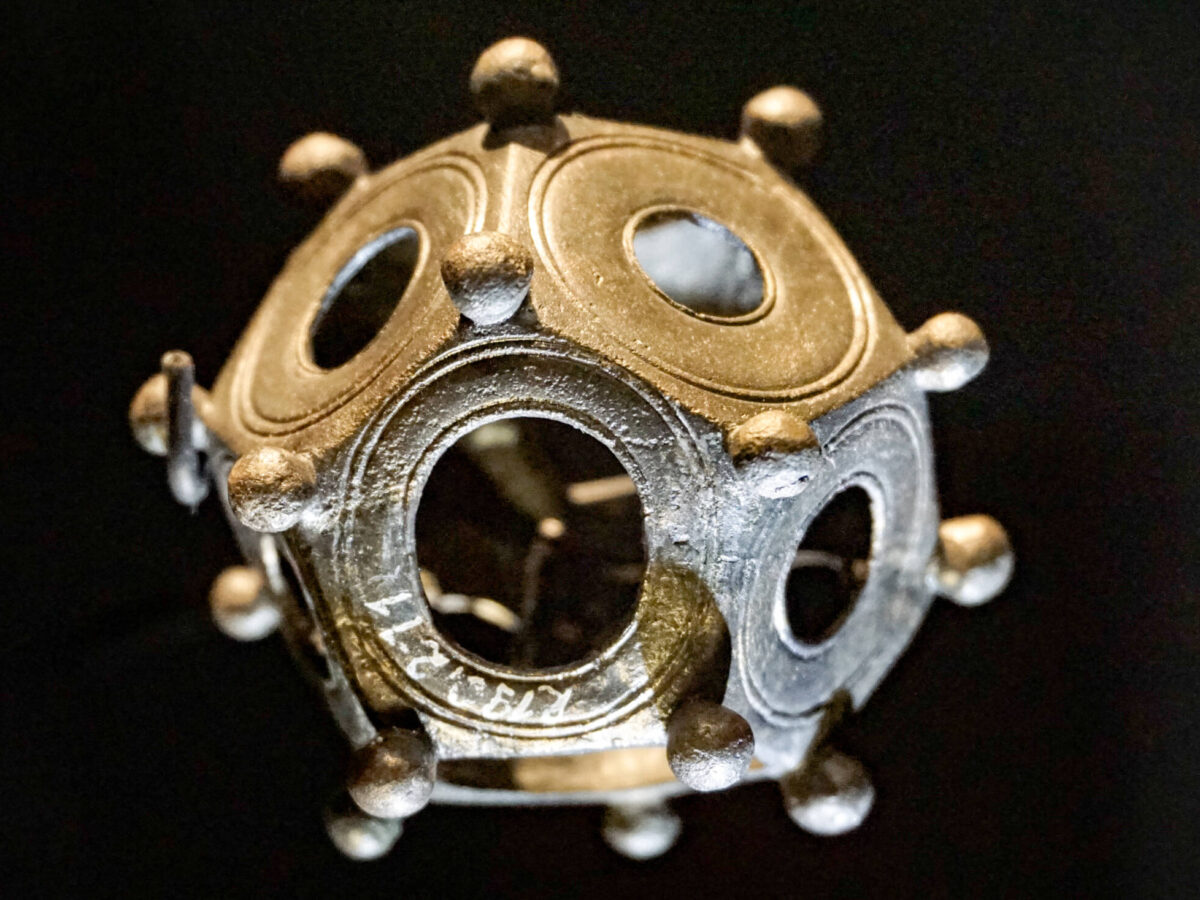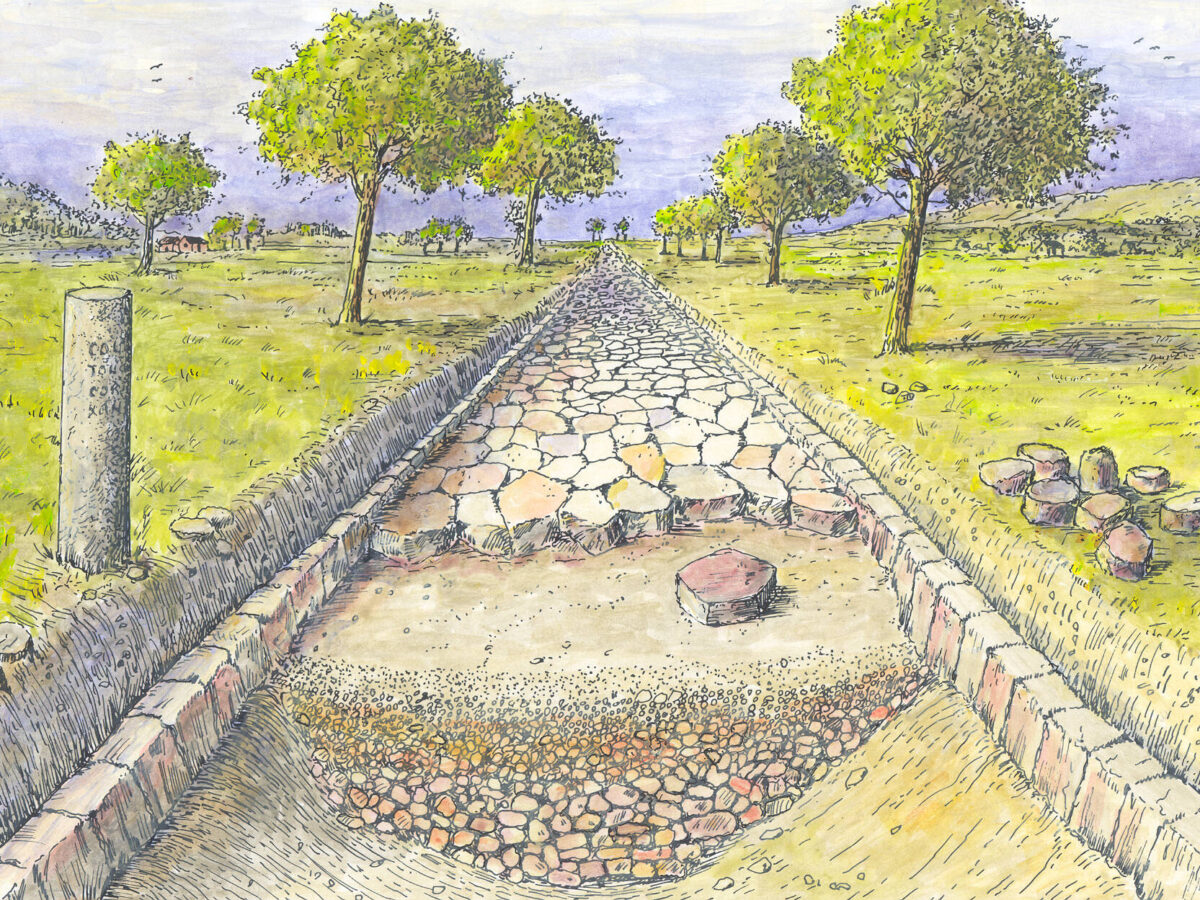Mysterious Romans
Author: Harry Lindelauf
Photography: Chantal Arntz

Dozens of scientists, satellite data, ground radar and super-smart software notwithstanding: it still proves impossible to crack a number of mysteries the Romans left us. Take the exact route of the Via Belgica, the location of a painful defeat for Caesar, or the remarkable dodecahedron.
1. The mystery of the Via Belgica
The Via Belgica is about 40 kilometres long in South Limburg. Large sections have been found, especially in Maastricht. Between Daalhof and the villa Kanjel on the Meerssenerweg we know almost the entire course. In Heerlen too, the route is known: on the west side the Via Belgica lies next to the current Valkenburgerweg and runs towards Uilestraat, passing under the town hall towards Putgraaf. There the Roman road leaves the Caumerbeek valley next to Huize De Berg, heading for Landgraaf.
Vanished road
The biggest riddle is how the route climbs from the Geul valley up towards Klimmen. And how it descends on the eastern side of Klimmen towards Voerendaal. Another mystery is the course between the Kisselsbos near Heerlen and the Worm valley near Rimburg. Karen Jeneson, curator of the Thermenmuseum, even studied the Valkenburg–Klimmen section using smart software. The software calculates, based on contour lines and other factors, which route would be the easiest to construct. Unfortunately: the calculations produce options, but there is no tangible evidence on the ground. And the idea that Roman roads are always perfectly straight turns out to be a misconception.
“The idea that Roman roads are always perfectly straight turns out to be a misconception.”— Harry Lindelauf

2. A twelve-sided mystery
Dozens of scientists around the world have spent the past 300 years puzzling over the dodecahedron: objects with twelve (‘dode’ in Greek) faces, each face being a pentagon. Over the past decades about 116 dodecahedrons have been found between Hungary and England. But what the objects were used for is still a great mystery.
Remarkable name
The dodecahedrons are remarkable objects: between 4.5 and 8.5 centimetres in size, with tiny balls soldered onto the corners. They are cast in bronze, although one silver example is known. Casting a dodecahedron is a fine and time-consuming piece of craftsmanship. But what the Romans used them for has so far not been proven by any researcher.
As a result, the ideas and trial balloons are numerous. A selection: you could calculate the sowing date for grains by looking at the position of the stars. The army might have measured the distance to an object with it. From the creative angle comes this suggestion: they were used to knit gloves. That apparently works. But because of the modest size of the dodecahedron, the resulting gloves are for baby hands…
3. A defeat in the Jeker valley?
During his campaign through our region, Julius Caesar’s army suffers a bloody defeat. The Eburones defeat an entire legion of 5,000 men. But where exactly does this happen? Near Limbourg in the Voer region? Or closer to home, in the Jeker valley?
“Friendly act”
Historian Tom Buijtendorp opts for the Jeker valley. In his book Caesar in the Low Countries, he points to the fortification of Caestert, a camp easy to defend due to the landscape. According to him, the Fourteenth Legion is encamped here in 54 BC and the Eburones owe their victory to a clever ruse. A delegation of the tribe warns the Romans as a “friendly act”: a great hostile army is said to be on its way. The Romans want to seek protection with the main force and move in a long column into the Jeker valley.
When the vanguard reaches a narrow section of the valley, the Eburones attack from the woods on the valley slope. The Romans are surprised and divided by a convoy of carts. Caesar is not present, which may also play a part. There is no hard evidence for Buijtendorp’s interpretation. Nor is it certain that Caestert is a Roman army camp. It may also have been used by the Eburones. Thus the precise location of the Eburone victory over the Romans remains a mystery.
“There is no hard evidence for Buijtendorp’s interpretation. Thus the precise location of the Eburone victory over the Romans remains a mystery.”— Harry Lindelauf

